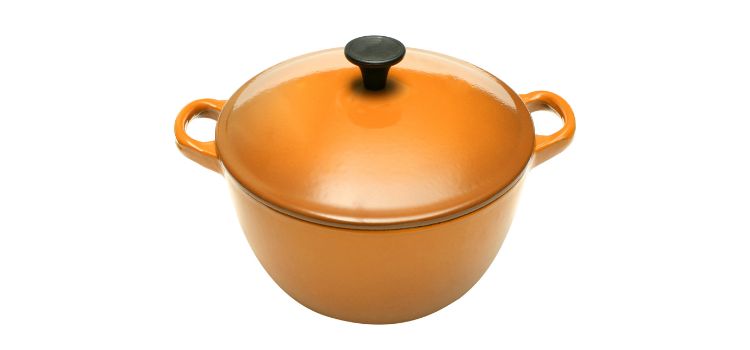As an Amazon Associate, I earn from qualifying purchases

In culinary convenience, the crock pot champions slow-cooked meals and effortless dinners. But amidst its reputation for savory stews and tender roasts, a curious question arises: Can this beloved kitchen device do the seemingly simple task of boiling water?
Join us as we explore the humble crock pot’s capabilities and reveal the truth about its potential to boil water.
Exploring the Mechanisms
Before determining if a crock pot can boil water, it’s important to understand how this appliance works. Crock pots, also known as slow cookers, consist of a ceramic or porcelain cooking vessel surrounded by a heating element encased in an insulated housing. The heating element produces heat and transfers it to the cooking vessel, slowly heating the food and cooking it over hours.
The key feature of crock pots is their low cooking temperature, typically between 170-280 degrees Fahrenheit. This low heat allows for long cooking periods without burning or overcooking the food.
Comparison of simmering vs. boiling temperatures
While a crock pot may not reach the boiling point, it can achieve the temperature needed for simmering. Simmering is when liquid is heated just below the boiling point, usually between 185-205 degrees Fahrenheit. This gentle heat allows flavours to meld and develop in stews, soups, and other slow-cooked dishes.
On the other hand, boiling is when liquid reaches its maximum temperature and begins to rapidly bubble. This high heat is typically used for cooking foods quickly, such as boiling pasta or hard-boiling eggs.
The Verdict: Can a Crock Pot Boil Water?
Upon examining the workings of a crock pot and distinguishing between simmering and boiling temperatures, determining if a crock pot can boil water is not straightforward.
While it may not reach the boiling point, a crock pot can heat water to a simmer. This means you can use your crock pot to make hot drinks, cook grains like rice and quinoa, and even poach eggs. However, a stove or other appliance may be more suitable for tasks that require boiling, such as making soup or cooking pasta.
Experimentation
If you’re still curious about the capabilities of your crock pot, you can conduct a simple experiment to test its ability to boil water. Here’s how:
- Fill your crock pot with water, leaving about an inch or two of space at the top.
- Set your crock pot on high and place the lid on top.
- Use a thermometer to monitor the temperature of the water as it heats up.
- Once the water reaches a consistent temperature, note if it has reached a simmer or boiling point.
- If the water only reaches a simmer, you can continue to heat it longer to see if it eventually reaches boiling point.
The results of this experiment may vary depending on the make and model of your crock pot and the amount of water used. However, the water will likely only reach a simmer and not fully boil. This is due to a crock pot’s low cooking temperature and slow heating process.
Safety Considerations
As with any kitchen appliance, it’s important to prioritize safety when using a crock pot. Here are some things to keep in mind if you decide to experiment with boiling water in your crock pot:
- Always use caution when handling hot liquids or appliances.
- Do not leave the crock pot unattended while attempting to boil water.
- Use proper protective gear, such as oven mitts, when handling the crock pot or its contents.
- Follow manufacturer instructions, and do not overfill the crock pot with water.
- Pay attention to the water’s temperature, and avoid removing the lid while it remains hot.
Conclusion
In conclusion, while a crock pot may not reach the boiling point, it can heat water to a simmer. This makes it a useful tool for making hot drinks or cooking grains. However, it’s best to use a stove or other appliance for tasks that require boiling.
Experimentation with your crock pot is always encouraged, but remember to prioritize safety and follow manufacturer instructions. You may discover a new use for your trusty kitchen appliance! Happy cooking!
As an Amazon Associate, I earn from qualifying purchases